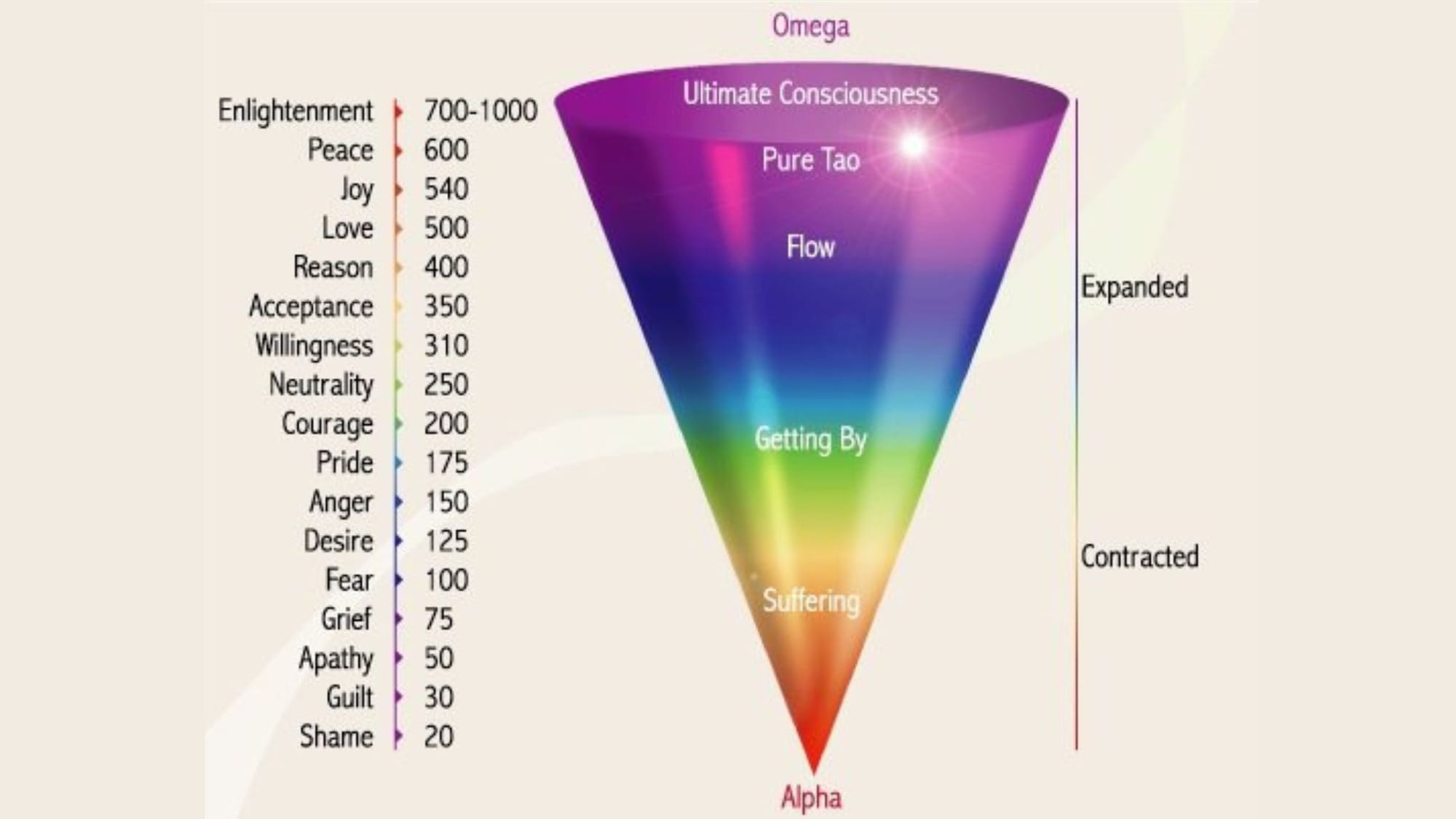Sound Healing Practices: From Ancient Traditions To Science

Sound healing is a therapeutic practice rooted in ancient traditions, that uses specific frequencies to influence physical, mental, and spiritual well-being.
In this blog post, we will observe sound healing across various cultures, with a focus on the solfeggio frequencies and the Quran's melodic recitation as a form of sound therapy. We'll also talk about the historical significance, modern applications, and health benefits of sound healing.
Table of Content
1. What Is Sound Healing?
2. What Are The Benefits Of Sound Healing?
3. What Are The Best Frequencies For Humans?
4. How Does Sound Healing Work?
5. The Science And History Behind Sound Healing
6. Sound Healing Practices In Different Cultures
7. The Quran As A Sound Healing Instrument
8. How To Incorporate Sound Healing Into Your Daily Routine?
Final Words
FAQs
1. What Is Sound Healing?

Sound healing is a therapeutic practice that uses sound vibrations to improve physical and emotional health. It involves various techniques such as singing bowls, tuning forks, gongs, and chanting, which help to realign the body’s frequencies to promote healing and relaxation.
The underlying principle is that all living beings are composed of vibrational energy, and sound healing works by resonating with and optimizing these vibrations, potentially alleviating stress, reducing pain, and enhancing overall well-being.
This practice has roots in ancient cultures and is gaining popularity in modern wellness circles for its holistic approach to health.
2. What Are The Benefits Of Sound Healing?
Sound healing offers a variety of therapeutic benefits, which operate primarily through the mechanisms of resonance and entrainment—whereby the body's natural frequencies are tuned to achieve more harmonious and optimal states.
Here’s what sound healing can do:
- Reduces Stress and Anxiety:
The calming sounds used in sound healing can slow down brain wave frequencies, inducing a state of relaxation similar to meditation. This helps reduce stress and anxiety levels. - Enhances Sleep:
By calming the nervous system, sound healing can improve sleep quality, helping to alleviate issues like insomnia and promote deeper sleep. - Improves Mood and Reduces Symptoms of Depression:
The soothing effects of sound therapy can boost serotonin production, the hormone associated with mood elevation, thus helping to alleviate depression and elevate mood. - Increases Focus and Clarity:
Certain sound frequencies can stimulate clearer thinking and greater focus by synchronizing brain wave frequencies, particularly those associated with heightened awareness and mental alertness. - Pain Relief:
Sound vibrations can also be effective in reducing pain. They distract the brain and help the body produce endorphins, which act as natural painkillers. - Promotes Physical Healing:
Vibrational frequencies can help stimulate the body’s healing processes, enhancing factors like cellular regeneration and circulatory system health. - Facilitates Emotional Release:
Sound therapy can help individuals express and release emotions, including those that have been suppressed, contributing to emotional balance and the release of tension. - Enhances Spiritual Well-being:
Many find that sound healing deepens spiritual connection through the meditative and introspective states it encourages. This is often used in various spiritual traditions to aid in meditation and personal growth.
Read Also:

3. What Are The Best Frequencies For Humans?

The concept of "best frequencies" for humans often centers on solfeggio frequencies, which are specific tones believed to have various healing effects. Each frequency targets different aspects of physical and emotional well-being.
Here’s a table of some commonly referenced solfeggio frequencies and their purported benefits:
| Frequency | Description |
|---|---|
| 174 Hz | The pain relief frequency. It provides a sense of security and reduces pain physically and energetically. |
| 285 Hz | Heals tissues and organs, improving overall body vitality. |
| 396 Hz | Often used for liberating guilt and fear. It is associated with grounding and resolving emotional patterns. |
| 417 Hz | Facilitates change and undoing situations, it can also help clear past traumas and promote energy. |
| 432 Hz | Promotes relaxation and natural harmony, enhancing emotional balance and a deeper connection to the universe. |
| 528 Hz | The "Miracle" frequency heals and repairs DNA, and is associated with growth and transformation. |
| 639 Hz | Enhances communication, understanding, tolerance, and love. |
| 741 Hz | Associated with solving problems and expressing solutions, also cleanses the body of toxins and electromagnetic radiation. |
| 852 Hz | Awakens intuition and returning to spiritual order, linked to a clearer thought process and awakening inner strength. |
| 963 Hz | Awakens the perfect state and connects with the higher divine consciousness. |
Additionally, in sound healing, different sound frequencies are used to balance the chakras, which are energy centers in the body. Each chakra corresponds to different aspects of our physical and emotional life.
Lower frequencies help with the lower chakras related to basic needs and security, while higher frequencies target the upper chakras that deal with complex thoughts and spirituality.
This means that by using specific sounds, you can enhance everything from your stability and safety to your spiritual awareness and connection. Through this method, sound healing can help bring harmony and well-being to all areas of your life.
Read Also:

4. How Does Sound Healing Work?
Sound healing works by using auditory stimuli to initiate healing processes in the human body through mechanisms such as entrainment, resonance, and the influence of specific frequencies on physiological and neurological functions.
Here's how it typically functions:
1. Entrainment
This principle involves synchronizing the body's internal rhythms with external sound frequencies.
For example, a steady drumbeat can help regulate heart rate and breathing, aligning them into a more steady, calm state. This synchronization can help reduce stress and promote relaxation.
2. Resonance
Everything in the universe, including the cells in the human body, vibrates at certain frequencies. Sound healing aims to use sounds that resonate with the body’s natural frequencies to enhance and balance the body's own vibrations.
For instance, if a part of the body is vibrating out of harmony with the rest, sound frequencies can be used to correct this disharmony, aiming to restore optimal functioning.
3. Frequency Following Response
This is a specific type of entrainment where the brain's brainwave frequencies align with the sound wave frequencies.
If a sound healing instrument emits a frequency that matches a meditative alpha state or a relaxed theta state, the brain is likely to mimic this frequency, inducing relaxation or deeper states of meditation.
4. Therapeutic Frequencies
Certain frequencies are believed to have specific benefits, such as 528 Hz purportedly aiding in DNA repair or 432 Hz being associated with emotional release and alignment. Sound healing therapies often use these frequencies to target specific health outcomes.
5. Vibrational Massage
Instruments like tuning forks and singing bowls produce vibrations that can be felt physically. When these instruments are used on or near the body, the vibrations act like a deep cellular massage, promoting circulation and energy flow which can aid in healing processes.
6. Psychological and Emotional Impact
Sound can evoke emotional responses due to its connection to memory and the emotional centers of the brain. Therapeutic sound can help access and release emotions and memories that may be contributing to psychological stress or illness.
Read Also:

5. The Science And History Behind Sound Healing
5.1. The Scientific Basis of Sound Healing
Sound healing operates on the premise that all matter, including the human body, consists of energy vibrating at different frequencies. Disruptions in these natural frequencies can lead to physical or emotional imbalances.
Sound healing uses external vibrations from instruments like singing bowls, tuning forks, and gongs to reintroduce the correct resonant frequencies back into the body. This process, known as entrainment, helps align the body's internal frequencies, fostering healing by restoring balance and promoting the flow of energy.
Physiologically, sound waves interact with our bodies in ways that trigger biochemical responses. For example, certain frequencies can stimulate the release of endorphins (natural pain relievers) and reduce cortisol levels (a stress hormone), thereby aiding in stress relief and emotional release.
These frequencies can also influence brainwave patterns, encouraging states of deep relaxation similar to those experienced during meditation.
5.2. Historical Context and Rediscovery of Solfeggio Frequencies
The solfeggio frequencies, a series of specific tones used in sound healing, have a rich history that intertwines with religious and mystical traditions. These frequencies were originally part of an ancient scale known as Just Intonation, used extensively in Gregorian Chants. The chants themselves are monophonic, simple melodies that were thought to be spiritually inspired and to enhance the connection between man and the divine.
The history of solfeggio frequencies dates back to the 11th century when a Benedictine monk named Guido d'Arezzo developed a method of teaching that used these unique tones to aid in singing practices. The frequencies were believed to impart spiritual blessings during performances, which was a pivotal aspect of their use in sacred music.
However, the knowledge and use of these specific frequencies were largely lost with the advent of the twelve-tone equal temperament scale in Western music during the Renaissance.
The original solfeggio scale was rediscovered in the mid-20th century by Dr. Joseph Puleo, who used numerical patterns found in the Bible's Book of Numbers to identify six frequencies that were mathematically sound according to the Pythagorean method of numeral reduction.
These frequencies, he posited, had specific healing effects on the body and mind, such as repairing DNA (528 Hz), facilitating change (417 Hz), and connecting relationships (639 Hz).
5.3. Scientific and Mystical Attributes
Scientifically, the impact of solfeggio frequencies has been explored in various studies that examine how these tones affect psychological conditions, cellular processes, and overall health. For instance, the 528 Hz frequency is often highlighted for its purported ability to repair DNA and support cellular functions.
Mystically, each frequency is associated with different spiritual dimensions and healing properties. These connections are not just speculative; they are based on the idea that sound can access deeper levels of consciousness and promote profound transformative experiences.
Read Also:

6. Sound Healing Practices In Different Cultures

6.1. Christianity And Solfeggio Frequencies
In Western Christianity, solfeggio frequencies have been an integral part of the spiritual and healing practices, particularly through their use in Gregorian chants. These chants, characterized by their simple, meditative melodies, were thought to enhance spiritual connection and introspection. The solfeggio frequencies used in these chants are believed to emit specific vibrational patterns that can influence the human psyche and physical health.
For example, the frequency 528 Hz is associated with repair and restoration, believed to heal and harmonize the body. Historically, these chants were used not only for worship but also for their calming and healing effects on monks and listeners alike, fostering a deep sense of peace and spiritual awareness.
6.2. Sound Healing In Eastern Practices
Eastern cultures, particularly in India and Tibet, have also harnessed the power of sound for healing and spiritual purposes, using techniques that are both ancient and profoundly effective:
- Indian Sanskrit Chants: In India, sound healing is prominently featured in the form of Sanskrit chanting, which is an integral part of yoga and meditation practices. These chants, like the Gayatri Mantra, are believed to have beneficial effects on the body and mind by producing vibrations that resonate with certain chakras.
- Tibetan Singing Bowls: Tibetan singing bowls have been used for centuries in Buddhist practice, not only for meditation but also for physical healing. The bowls produce sounds that invoke a deep state of relaxation, helping to reduce stress and anxiety, while the vibrations are said to improve circulation and activate healing processes in the body.
6.3. Other Global Sound Healing Practices
Sound healing practices vary widely across different cultures, each bringing a unique approach to the therapeutic use of sound:
- Aboriginal Didgeridoo: In Australian Aboriginal culture, the didgeridoo has been used as a healing tool for over a thousand years. The low-frequency sounds produced by this instrument are believed to heal, mainly by promoting relaxation and helping with circulatory and respiratory health.
- African Drum Circles: African cultures have used drumming as a part of healing and community ceremonies for centuries. The rhythmic beating of drums is used to reduce tension, elevate spirits, and create a sense of connectedness among participants.
- Shamanic Drumming: Native Americans and other shamanic traditions use drumming to promote healing and direct communication with the spiritual world. The repetitive drum patterns are employed to induce trance-like states, allowing practitioners to journey to different spiritual dimensions for wisdom and healing.
7. The Quran As A Sound Healing Instrument

In Islamic tradition, the recitation of the Quran is not merely a religious ritual but a profound spiritual practice that encompasses both worship and healing.
Quranic recitation is central to Islamic life, valued for both its linguistic beauty and the deep emotional and spiritual resonance it evokes. The act of reciting the Quran is considered an art form, known as Tajweed, which emphasizes the accuracy and melodiousness of speech.
This spiritual practice is thought to connect the reciter and listeners directly with the divine, providing a pathway to enlightenment and inner peace.
7.1. How Quran Recitation Improves Healing
- Intonation: The melodic flow of Quranic recitation plays a crucial role in its healing properties. Each verse is recited with precise intonation that enhances its spiritual impact, allowing listeners to experience a deeper emotional response. This melodious delivery facilitates physiological benefits, such as lowering stress levels and inducing a state of calm.
- Rhythm: The rhythmic patterns of recitation are carefully constructed to engage listeners, often leading to a meditative state. This rhythmic cadence can help regulate breathing and heart rate, promoting a relaxation response throughout the body.
- Cadence: The pace and tempo of Quranic recitation can vary, which influences its therapeutic effects. The cadence helps sustain attention and fosters a profound sense of tranquility in the listener, further enhancing the meditative quality of the recitation.
7.2. Scientific Evidence of the Impact of Quranic Sound Patterns
Studies have explored the physiological impacts of listening to Quranic recitation, noting improvements in stress reduction, anxiety, and emotional health.
Research indicates that the sound patterns of Quranic recitation can affect the autonomic nervous system, lowering blood pressure and reducing heart rate variability, thereby promoting overall well-being.
Many individuals report experiencing profound peace and emotional healing from listening to the Quran. These anecdotal accounts often describe feelings of overwhelming calmness, spiritual insight, and a reduction in psychological distress.
In some cases, listening to Quranic recitation facilitates deeper sleep and improves concentration.
Check out this app for an impressive collection of female Quran recitators!
Qariah.app8. How To Incorporate Sound Healing Into Your Daily Routine?
Here are several practical ways to incorporate this sound healing therapy into everyday routines:
1. Morning Meditation with Sound
Begin the day with a short meditation session incorporating sound. Use solfeggio frequency tracks, singing bowls, or binaural beats to set a peaceful tone for the day ahead.
2. Relaxing Sound Baths Before Sleep
Create a nightly routine that includes listening to a sound bath session. Instruments like crystal bowls or tuned wind chimes can induce relaxation and improve sleep quality.
3. Focused Listening During Breaks
During work breaks, listen to specific frequencies that promote concentration and relaxation. Even a few minutes can reset your mental state and reduce stress.
4. Background Music While Working
Play low-volume solfeggio frequencies or nature sounds in the background while working to help maintain a calm and focused environment.
5. Meditation with Solfeggio Frequencies
Choose a solfeggio frequency that corresponds to your specific needs (e.g., 528 Hz for healing and DNA repair, 639 Hz for improving relationships). Use this sound as a focal point in your meditation, either by listening through headphones for a more immersive experience or playing it aloud in a quiet space.
6. Sound Baths
Participate in or create your own sound bath using instruments tuned to solfeggio frequencies. If attending a sound bath session isn't feasible, various apps and online resources offer recorded sound baths that can be enjoyed at home. Ensure you are in a comfortable position and allow the vibrations to wash over you, focusing on your breath and the sensations in your body.
7. Daily Listening Practices
Incorporate listening sessions into your daily routine. You can listen to these frequencies during morning routines, as part of a wind-down process before bed, or even while exercising gently. The key is consistency and intentionality—be present with the sound and notice any physical or emotional sensations.
8. Visualization
While listening to solfeggio frequencies or participating in a sound bath, visualize the sound vibrations healing and rejuvenating your body. Imagine the sound as light or energy moving through and aligning your body, clearing out negativity, and restoring your systems to health.
Final Words
In conclusion, sound healing harnesses the therapeutic power of vibrations to enhance well-being, drawing on ancient traditions and modern practices. By incorporating sound baths, focused listening, and meditative exercises into daily routines, individuals can effectively reduce stress, improve emotional health, and achieve greater balance. As an enriching complement to modern wellness, sound healing offers profound benefits for both the mind and body.
Become a Sista and follow us on Instagram, subscribe to our YouTube channel, and tune into our podcasts on Spotify!
Frequently Asked Questions About Sound Healing
1. What is sound healing?
Sound healing is a therapeutic practice that uses vibrations from sound to improve physical and emotional health. It involves techniques like singing bowls, tuning forks, and chanting, which are believed to align and balance the body's energies and promote well-being.
2. Is sound healing scientifically proven?
Sound healing has some scientific backing, particularly in how certain frequencies can affect the body's relaxation response and stress levels. However, more research is needed to fully understand its efficacy and the extent of its benefits across different health conditions.
3. Does sound frequency healing really work?
Many people report positive effects from sound frequency healing, such as reduced stress, improved sleep, and better mood. While individual experiences vary, there is evidence suggesting that sound frequencies can influence physiological processes like heart rate and cortisol levels, contributing to overall relaxation and well-being.
4. Who should not do sound healing?
Sound healing is generally safe for most people. However, individuals with sound sensitivity, certain psychiatric conditions, or those who find the vibrations unsettling may wish to avoid this therapy. It’s always best to consult with a healthcare provider before starting any new therapeutic practice, especially if you have existing health concerns.


